They’re the size of a jellybean—and they already think they rule the sky.
Baby hummingbirds are pure wonder wrapped in feathers. Born blind, featherless, and no bigger than a paperclip, they somehow grow into glittering aerial acrobats in just a few weeks. It’s not just cute. It’s wild.
Their nests are thimble-sized, their hearts beat faster than most of us can count, and their mothers are tiny, tireless powerhouses.
One gust of wind could flip their whole world upside down—and yet, they thrive.
If you’ve ever been enchanted by a flash of wings or a shimmer of color in the garden, wait till you hear what the babies are up to.
These tiny miracles are rewriting the rules of survival, one wingbeat at a time.
Tiny Beginnings
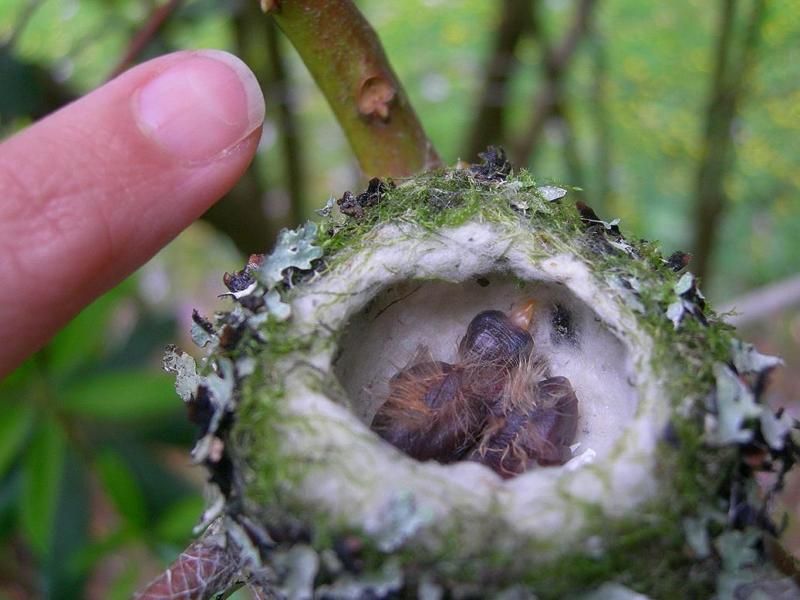
Imagine a creature so tiny, it hatches from an egg scarcely larger than a jellybean! Baby hummingbirds are born into the world as minuscule miracles. Weighing less than a dime, these delicate beings begin their journey in nests that are often no bigger than a golf ball.
Their initial vulnerability is profound as they emerge blind and featherless, entirely dependent on their mother for warmth and food. Yet, within this fragile form lies the potential for incredible growth, fueled by their mother’s care and the wonders of nature.
The Perfect Nest
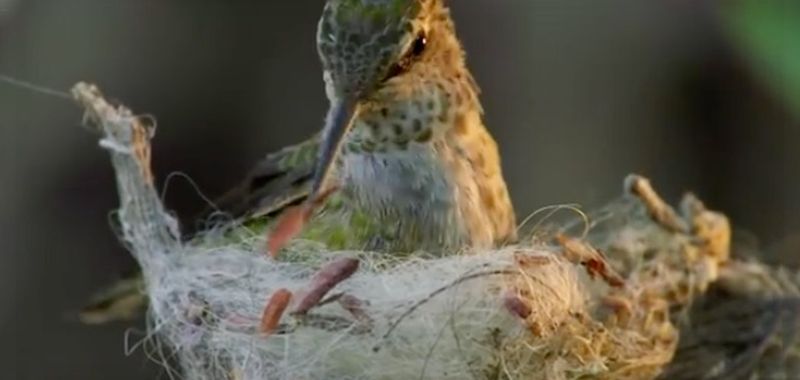
Crafted with precision, the hummingbird nest is a marvel of avian architecture. Constructed using soft plant fibers, feathers, and spider silk, these nests expand as the chicks grow. The elasticity provided by the spider silk ensures that the nest remains snug and secure, accommodating the rapidly growing babies.
Positioned strategically on slender branches, the nest is both a sanctuary and a fortress, providing camouflage from predators. This cozy cradle is a testament to the ingenuity and craftsmanship of the mother hummingbird, reflecting her instinctual dedication to her offspring.
Feeding Frenzy
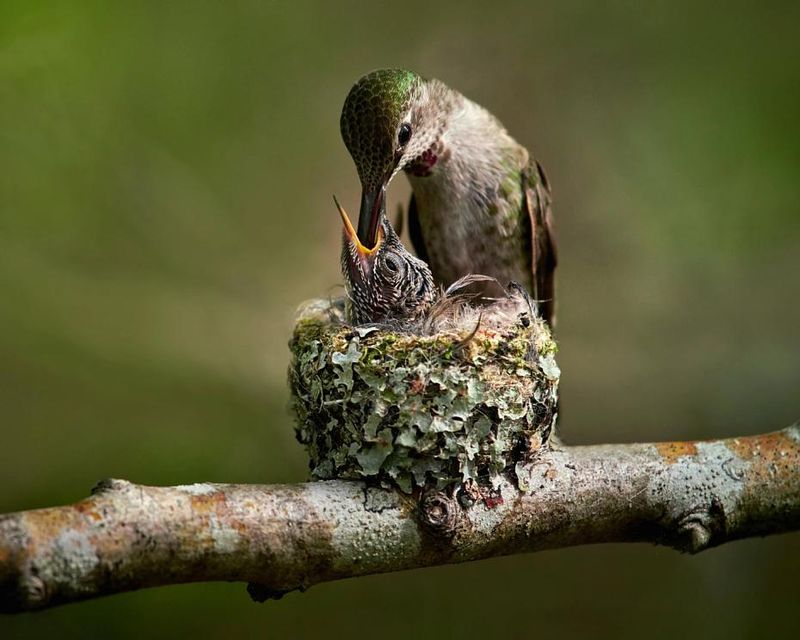
The dining habits of baby hummingbirds are nothing short of relentless. With a diet primarily consisting of regurgitated nectar and insects provided by their mother, these little ones demand constant nourishment. Mother hummingbirds make countless trips each day, tirelessly collecting food for their ever-hungry brood.
Their rapid metabolism means they require frequent feeding to maintain energy levels necessary for growth and development. This feeding frenzy is a dance of survival, a testament to the unwavering dedication of the mother and the insatiable appetite of her young.
Rapid Growth

In the world of hummingbirds, change happens fast. Baby hummingbirds undergo a remarkable transformation within weeks of hatching. Initially blind and featherless, they rapidly develop pinfeathers that will soon cover their tiny bodies with iridescent plumage.
This rapid growth is fueled by their high-protein diet and the warmth provided by their mother’s body. As days pass, their eyes open to reveal the world around them, initiating the next phase of their journey. Their swift development is a captivating spectacle of nature’s remarkable ability to nurture growth and life.
Learning to Fly
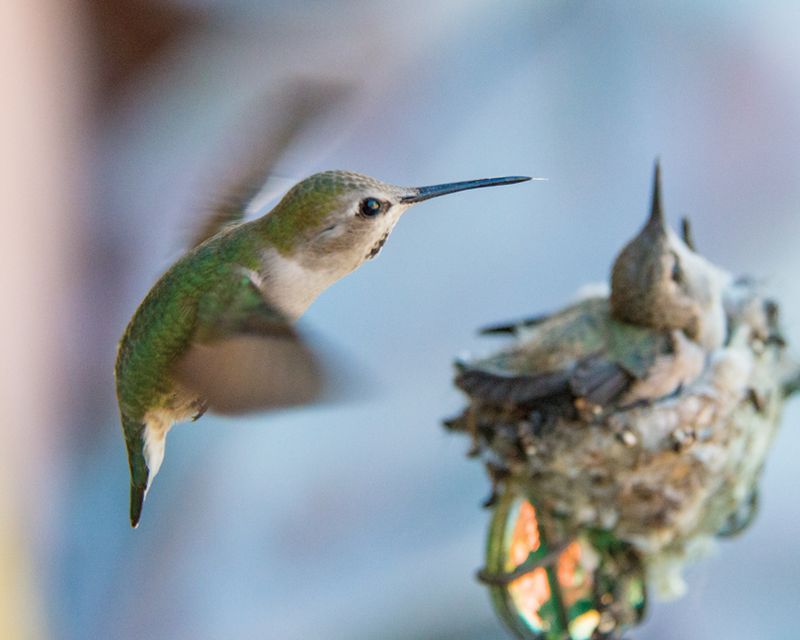
The first flight of a baby hummingbird is a thrilling rite of passage. As their strength and coordination improve, they begin to venture beyond the confines of the nest. These fledgling flights are often wobbly and uncertain, yet they mark the start of their independence.
Encouraged by their mother, young hummingbirds practice tirelessly, honing their skills with each attempt. This period of learning is crucial, as mastery of flight ensures their survival and ability to forage. Observing their aerial endeavors is a joyful reminder of the wonders of nature’s resilience.
Colorful Plumage
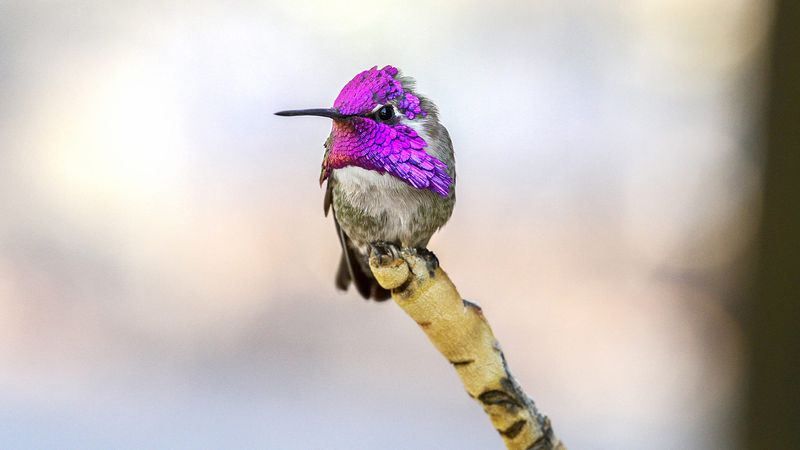
One of the most enchanting aspects of a young hummingbird is the emergence of its iridescent plumage. As their feathers develop, baby hummingbirds begin to display the vibrant colors that will define them as adults. This kaleidoscope of hues is not only captivating but serves practical purposes in communication and mate attraction.
Their shimmering feathers catch the light in mesmerizing ways, creating a spectacle that delights bird watchers and nature enthusiasts alike. The transformation from drab to dazzling is a magical process, highlighting the diversity of avian beauty.
A Mother’s Love

The bond between a mother hummingbird and her chicks is a profound testament to maternal dedication. From the moment her eggs are laid, she is committed to their survival, tirelessly tending to their needs. Her days are filled with the dual tasks of feeding and protecting her young, ensuring they remain safe from predators.
Her devotion is unwavering; every act, from nest building to feeding, reflects her role as a guardian. This nurturing relationship is a heartwarming reminder of the powerful instinctual bonds that exist in the animal kingdom.
Tiny Heartbeats

A baby hummingbird’s heart beats at an astonishing rate, a vital component of its survival. With heart rates reaching over 1,200 beats per minute, these tiny engines pump life throughout their fragile bodies, supporting their energetic needs.
This rapid heartbeat is crucial, enabling their swift metabolism and active lifestyle. Observing this miniature marvel in action underscores the intricate complexities of avian physiology. The hum of their heartbeat is a poetic reminder of the vibrancy and vigor that define these small but mighty creatures.
The Power of Metabolism
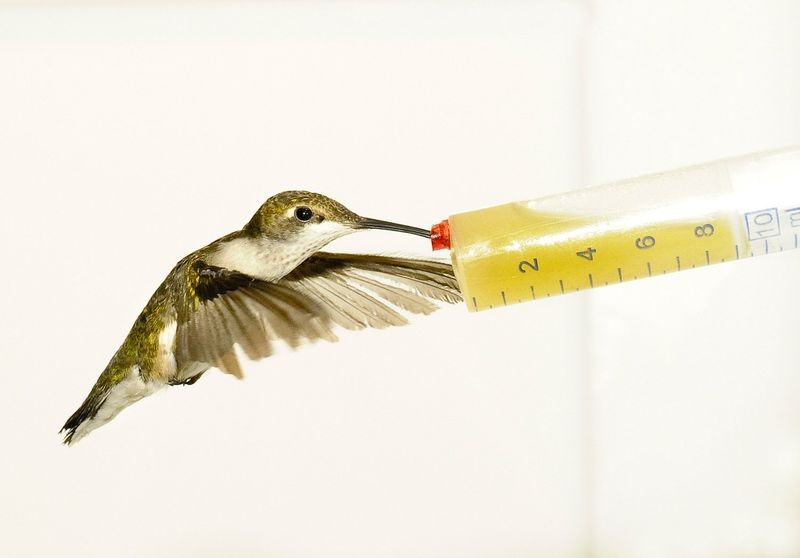
The metabolism of a baby hummingbird is a study in efficiency and energy. To support their rapid growth, these tiny birds consume food at a phenomenal rate. Their metabolism is a finely tuned engine, converting food into energy with remarkable speed and effectiveness.
This metabolic prowess ensures they sustain the high energy levels necessary for growth and development, allowing them to transition from helpless chicks to capable pilots of the skies. The hummingbird’s metabolic efficiency is a fascinating aspect of their biology, offering insight into their survival strategies.
Vibrant Voices

Though they are tiny, baby hummingbirds have a voice that resonates with vigor. From the safety of their nests, their high-pitched chirps communicate hunger or alert their mother to their needs. These vocalizations are a cornerstone of their early communication.
Their voices add to the symphony of the natural world, contributing to the lively ambiance of their environment. This vocal expression is an essential element of their growth, helping to forge connections and ensure they’re heard in the bustling ecosystem surrounding them.
The Art of Camouflage
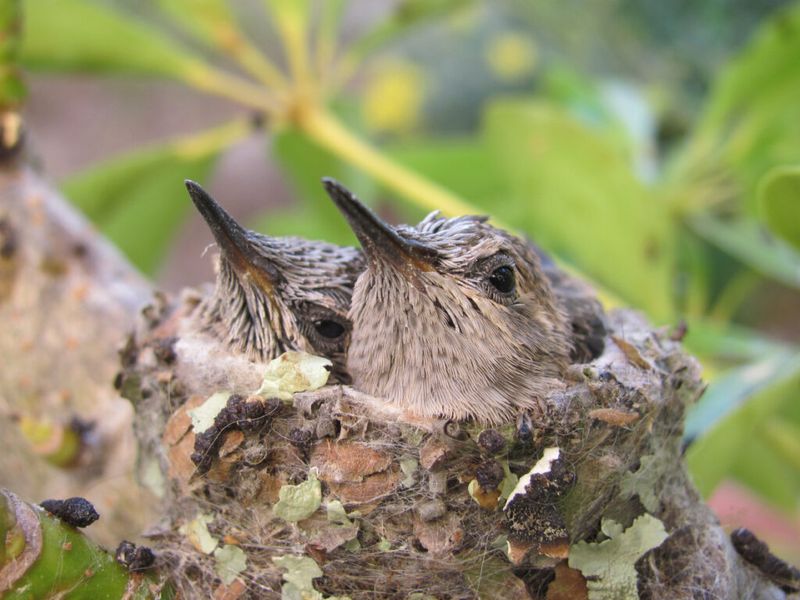
In the wild, survival often hinges on the ability to remain unseen. Baby hummingbirds, with their instinctual knack for camouflage, blend seamlessly into their surroundings. Their nests are constructed to mimic the foliage, providing the perfect hiding spot from potential predators.
As they grow, their plumage also offers a form of protection, allowing them to merge with the dappled light of their natural habitat. This artful disguise is a critical survival strategy, demonstrating nature’s inventiveness in ensuring the continuity of life.
Sibling Rivalry

Even within the cozy confines of a nest, competition can be fierce. Baby hummingbirds often engage in sibling rivalry, each vying for the best position to receive food from their mother. This rivalry is a natural part of their development, promoting survival of the strongest.
While sibling squabbles may appear relentless, they play a crucial role in teaching young birds vital survival skills. Observing these interactions offers insight into the dynamics of family life in the animal kingdom, where cooperation and competition coexist.
Nighttime Nesting
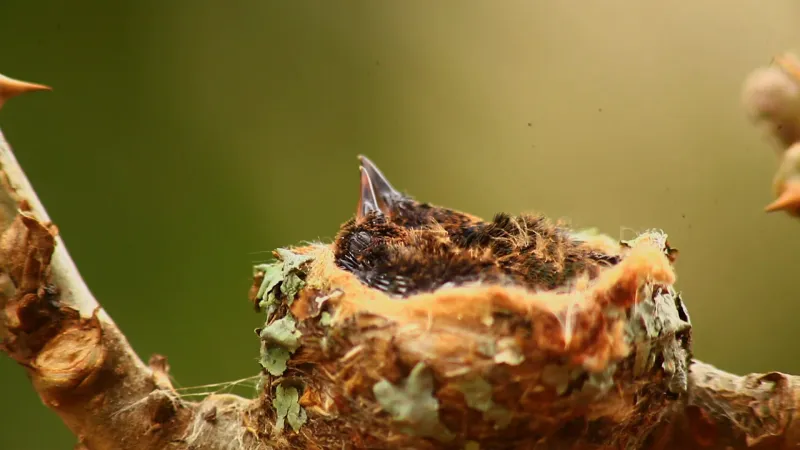
As day turns to night, baby hummingbirds retreat to the safety of their nests, where they huddle together for warmth. These nighttime rituals are essential for conserving energy and providing security. The nest becomes a sanctuary, a haven where they rest and recharge for the challenges of the coming day.
Their nocturnal habits offer a glimpse into the quieter side of their lives, where rest and recovery are as important as the activities of daylight. This balance of rest and action is a fundamental aspect of their survival strategy.
First Steps of Independence

The journey to independence is a monumental step for any young hummingbird. As they gain confidence in their abilities, they begin to explore the world beyond their nest. These initial adventures are filled with discovery and learning, as they navigate the complexities of their environment.
This period is crucial for developing the skills necessary for survival, including foraging and flight. Watching them take these tentative steps is a beautiful reminder of the courage and curiosity that drive their development.
Lifespan of Adventure
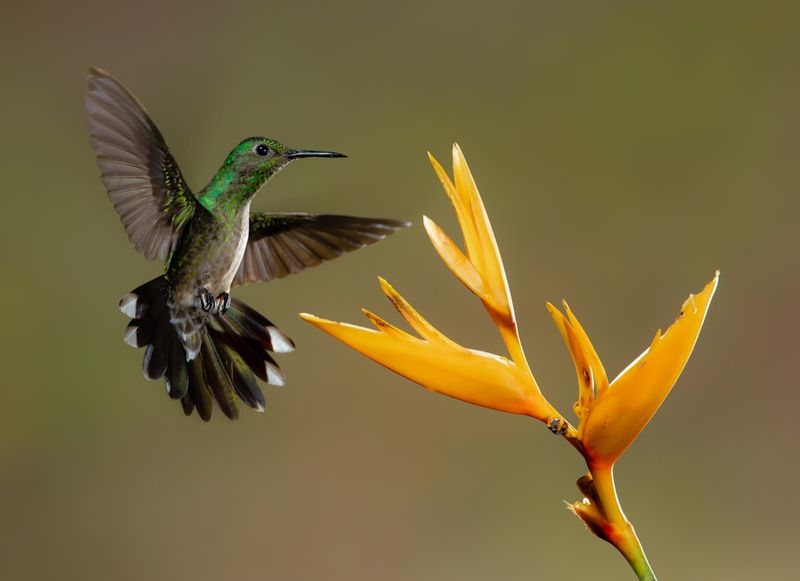
The life of a hummingbird is a whirlwind of activity, from their earliest days as chicks to their later years as adept flyers. Each stage presents new challenges and adventures, contributing to their remarkable journey.
While their lives may be brief compared to other birds, they are filled with vibrant experiences and intense activity. This lifelong adventure, beginning with their first breath, is a testament to the tenacity and spirit of these extraordinary creatures.

